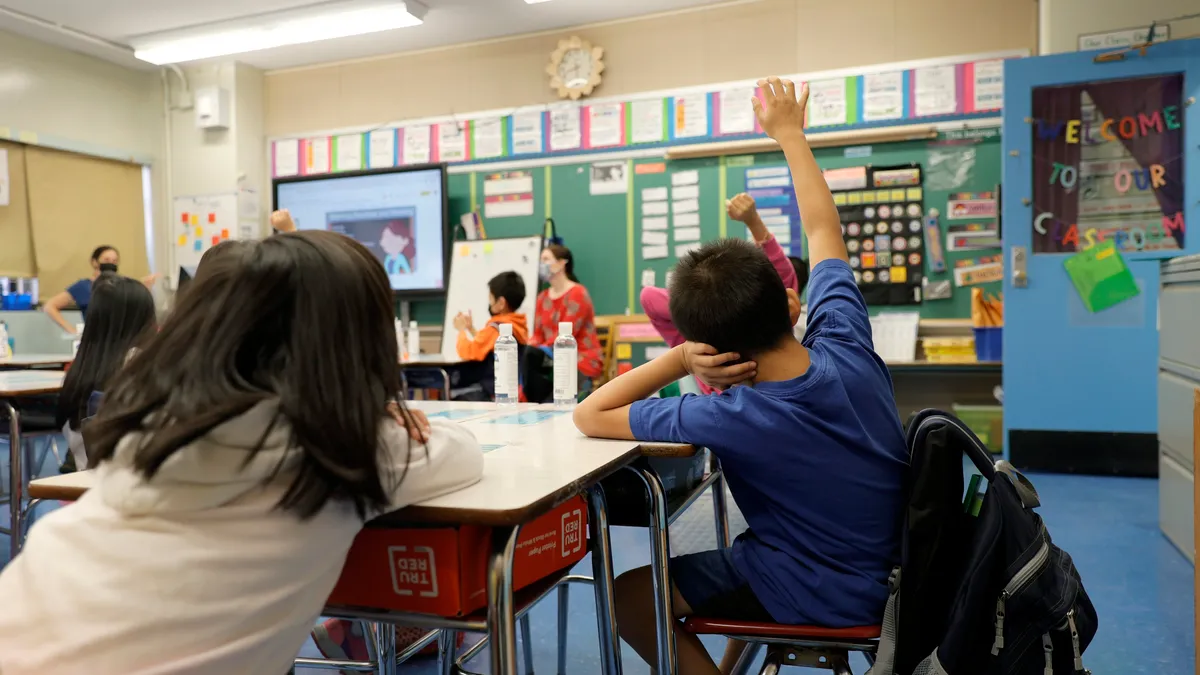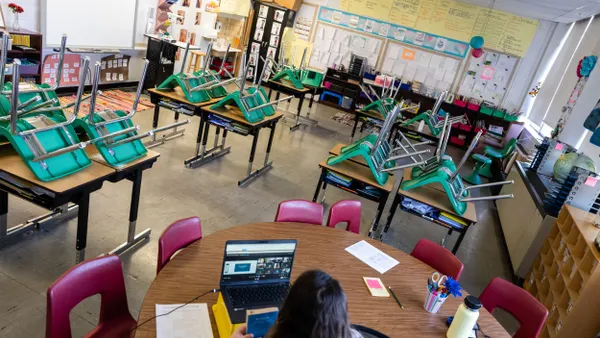Dive Brief:
- After five years of strengthening its dual language program, Texas' San Antonio Independent School District now uses an 80-20 immersion model for all of its emergent bilingual students, marking a policy change that ensures more educational equity for the district’s bilingual students, Olivia Hernández, assistant superintendent for learning, language and literacy, and Esmeralda Alday, executive director of dual language, ESL & migrant, write for the San Antonio Report.
- San Antonio ISD's student population is 90% Latinx, with many from families that continue to speak Spanish at home. In 2016, San Antonio ISD shifted its bilingual education program with the help of community stakeholders and district members, and its new model is intended to bridge the gap between bilingual students’ school and home lives.
- The immersion program ensures native Spanish speakers retain their original language foundation while learning English. It starts with a mix of 80% Spanish and 20% English in pre-K, then adds more English every year until 4th grade when it becomes 50-50. This process is also intended to help prevent Spanish-speaking students from falling behind in other disciplines such as reading and writing.
Dive Insight:
The benefits of dual language instruction may stick with learners throughout their lives, as the approach is thought to enhance cognitive development. Bilingual students are known to communicate with a higher level of literacy and develop an awareness of how languages work, aiding in later language acquisition.
Such programs are gaining popularity, and many districts that offer them now have wait lists. For example, when New York City opened 33 dual language pre-K schools in 2018, there were 2,900 applications for about 600 spots.
In Salt Creek Elementary in Chula Vista, California, where a 90-10 dual language model has been used for 20 years, 10% of instruction is delivered in English in kindergarten. The program eventually transitions to a 50-50 split by 6th grade and is intended to ensure students from Spanish-speaking homes have equitable access to the same content as their English-speaking peers. The percentage of English learners exceeding state standards in English language arts grew from 42% in 2014-15 to 51% in 2018.
Educating ELs became particularly challenging during the pandemic when in-person learning was not possible. To continue delivering EL education through remote instruction, educators had to develop new strategies to support students online. Despite the efforts, ELs were still among the populations most disproportionately affected by the extended school closures.





 Dive Awards
Dive Awards






